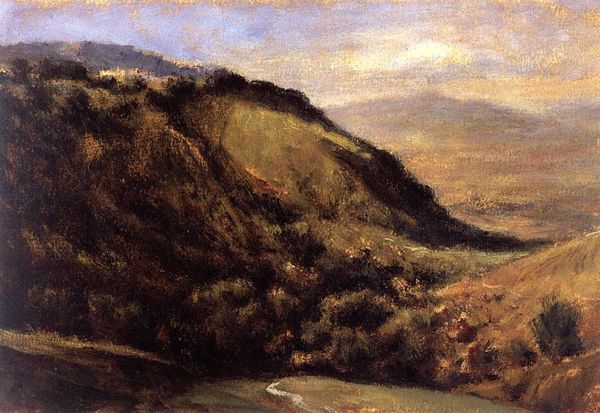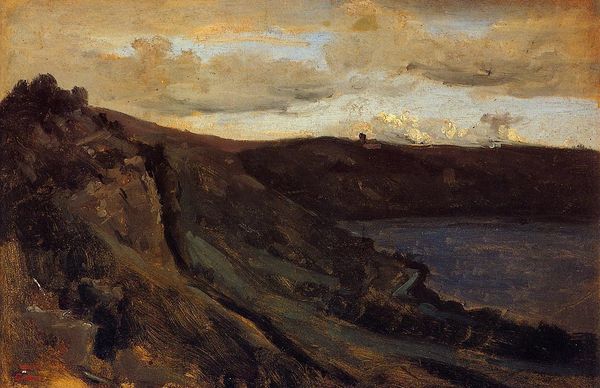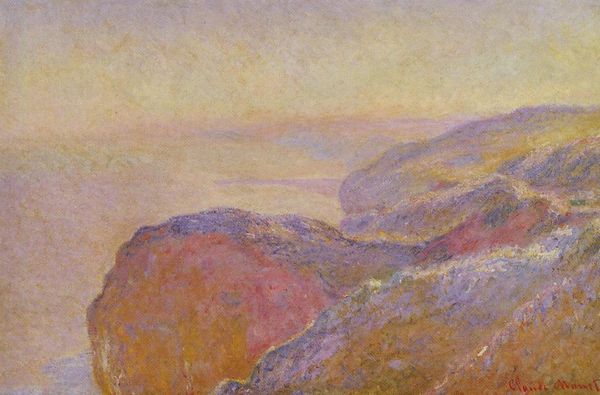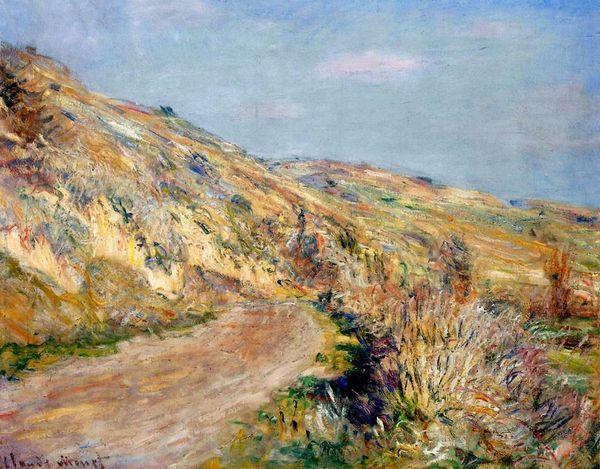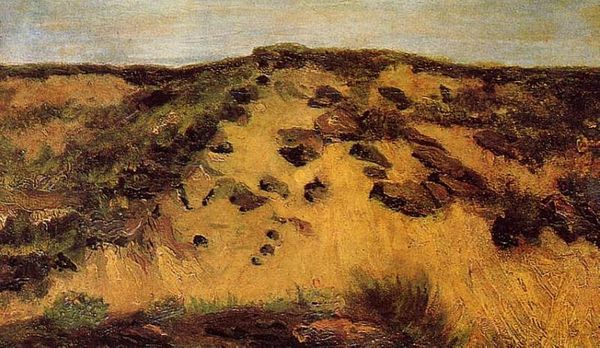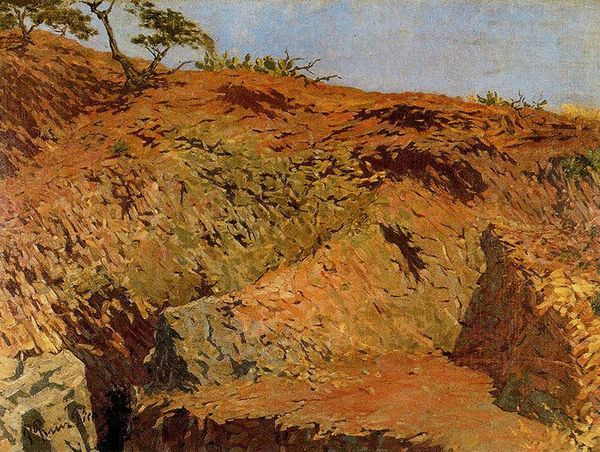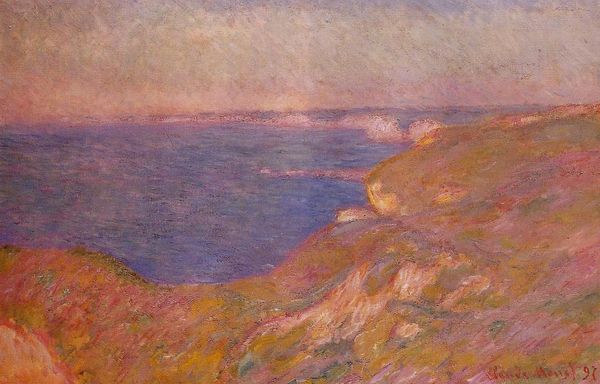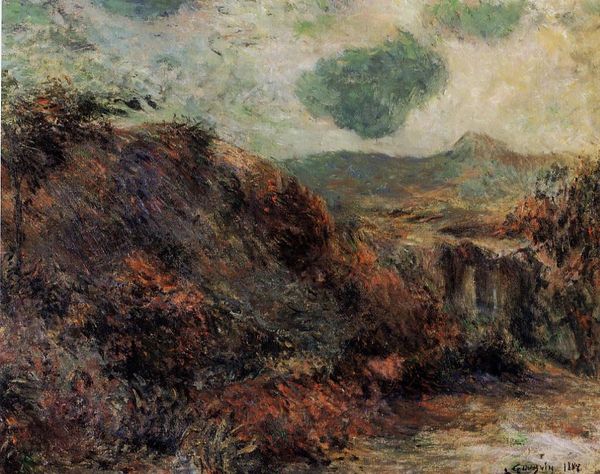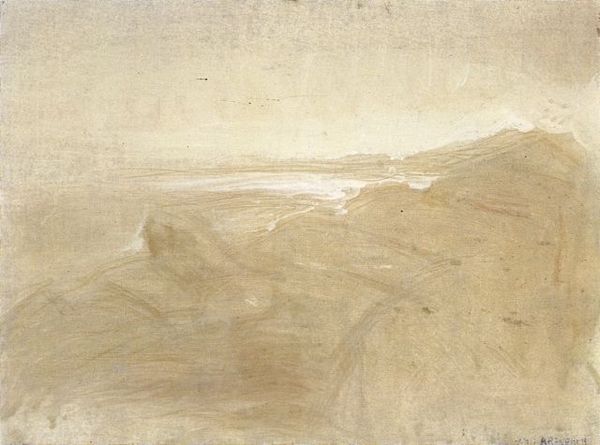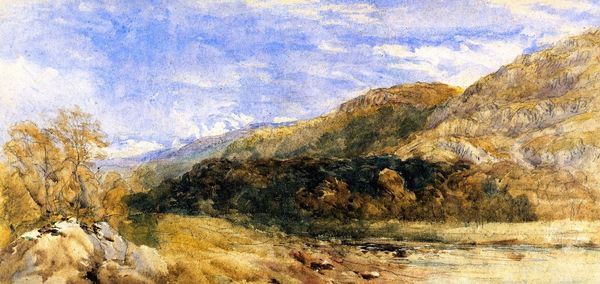
painting, plein-air, oil-paint
#
painting
#
impressionism
#
plein-air
#
oil-paint
#
landscape
#
impressionist landscape
#
oil painting
#
realism
Copyright: Public domain
Pierre-Auguste Renoir captured the Varangeville Church and cliffs on canvas using oil paints, embedding within it a silent dialogue between nature and the sacred. The church, perched atop the cliff, acts as a beacon, a symbol deeply rooted in centuries of spiritual quest and community. The placement of religious structures atop elevated natural formations is a motif echoed across cultures; think of ancient temples on mountains or cathedrals on hills, each seeking to bridge the earthly with the divine. This visual language taps into our collective memory, resonating with the innate human desire to transcend the mundane. The cliff itself, a geological testament to time and erosion, embodies resilience and permanence. Consider its similarity to other natural formations throughout art history: The rough rock of a mountain in Caspar David Friedrich symbolizing the sublime; the rugged canyons in Thomas Cole mirroring human struggles. Renoir’s cliffs and church speak to an emotional and psychological landscape, a powerful force that silently engages us, connecting our present moment to an age-old narrative of faith, nature, and the enduring human spirit.
Comments
No comments
Be the first to comment and join the conversation on the ultimate creative platform.
